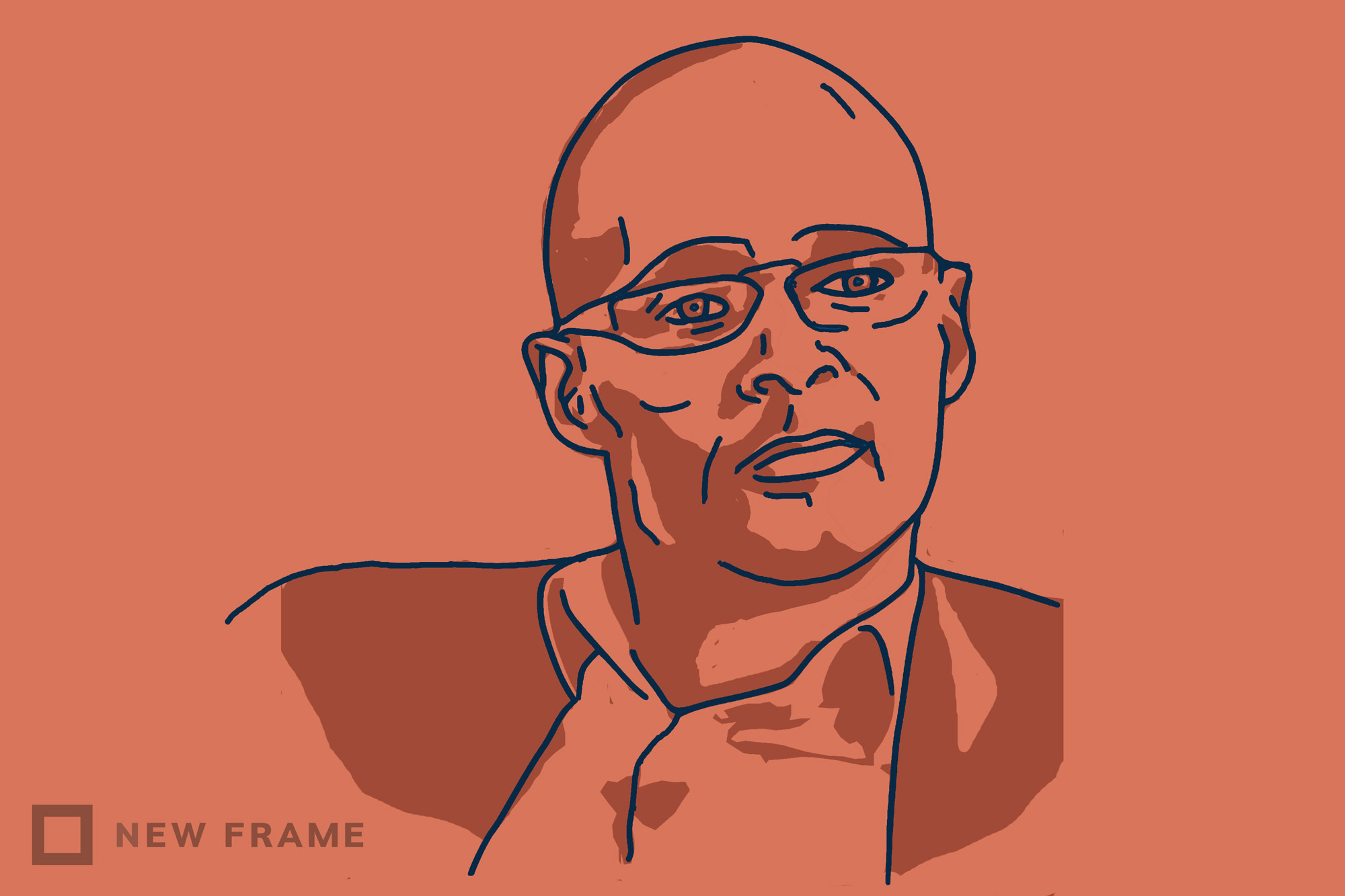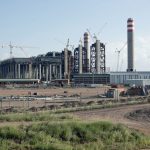South Africa needs GDP growth, not austerity
In the second part of this month’s New Frame, New Economy forum, economist Duma Gqubule responds to Michael Sachs’ take on what this year’s budget needs to do.
Author:
23 February 2021

In his recent state of the nation address, President Cyril Ramaphosa lied to the people of South Africa about the size of the stimulus meant to counter the effect of the devastating, once-in-a-century pandemic and recession. “The social and economic relief package that we introduced in April last year is the largest intervention of its kind in our history. It identified measures worth a total of R500 billion, or about 10% of our GDP,” he said.
Michael Sachs implies that the government’s lies about the size of the stimulus implemented during the 2020-2021 fiscal year do not matter. “The budget we should really be concerned about is not last year’s, but the one to be tabled on Wednesday 24 February,” he says.
But an administration that wants to regain public trust and rebuild public institutions must, first and foremost, tell the truth and be accountable to the people it serves.
Related article by Michael Sachs:
Ramaphosa’s second lie was that South Africa has an infrastructure-led economic recovery plan. There is no way out of this crisis without an injection of new money into the economy. By definition, there is too little money circulating in the economy during a recession. A national budget does not operate like a household budget. When a country spends more money it increases its national income or gross domestic product (GDP). For example, according to the International Monetary Fund (IMF), an increase in public investment of 1% of GDP can push GDP up by 2.7%.
In the context of the South African economy, a R50 billion increase in public investment would generate GDP of R135 billion. Such an investment would generate the income to pay for itself. When the government cuts spending, it reduces national income. The National Treasury has forecast a decline in investment during 2021. An ANC economic transformation committee presentation says there will be a R130 billon decline in investment this year.
Like other countries, South Africa has only one option; it has to spend its way out of the crisis. The country has a GDP growth problem not a debt problem. It must increase GDP growth to create fiscal sustainability. But the treasury plans to withdraw R310 billion from the economy during the next three years.
As Sachs rightly points out, “This will be the first contraction of this size sustained over three years in the country’s modern history.” There cannot be a recovery within the context of austerity, a self-defeating process that will reduce GDP growth and result in a higher debt ratio.
The real stimulus
Ramaphosa’s stimulus package had two components. There was above-the-line (off-budget) spending of R240 billion. This comprised a R200 billion loan guarantee scheme and R40 billion that the Unemployment Insurance Fund (UIF) would pay to people who were temporarily unemployed. Then there was below-the-line (on-budget) spending of R260 billion. This comprised government spending of R190 billion and tax relief measures of R70 billion. The package would be partly financed by reprioritising state spending of R130 billion.
But a stimulus refers to new money that is injected into the economy. This means that reprioritised spending should not count as part of the stimulus. From day one, the stimulus was not R500 billion.
Related article:
However, on 24 June 2020, the treasury effectively cancelled the stimulus when it announced a supplementary adjustment budget.
The budget allocated R145 billion towards the Covid-19 response. This was offset by budget cuts of R109 billion. Therefore, the increase in new money was only R36 billion. A treasury presentation showed that tax relief – as opposed to tax deferrals, which do not result in a loss of revenue for the fiscus – was only R26 billion. Therefore, the government’s on-budget contribution to the stimulus was only R62 billion, or 1.2% of GDP.
By 18 February, the UIF had spent R58.1 billion, which was paid to 4.5 million employees. By 16 January, banks had provided loans of R17.8 billion. Because the banks had shifted loans towards prime clients who would have received them without a state guarantee, one can’t count them as part of the stimulus.
Therefore, the stimulus was R120.1 billion or 2.4% of GDP. The mantra of global stimulus packages is that they should be equal to the expected shock to the economy, which was an estimated 8% decline in GDP during 2020.
Sachs creates a false binary between relief measures and stimulus. Relief provided to households or firms to protect incomes is a form of stimulus because it requires additional resources, although the objective – to stabilise the economy – is different.
The South African stimulus was also inadequate when benchmarked against other countries, including emerging economies. According to the IMF, countries have announced stimulus packages worth $14 trillion since the start of the global recession during 2020. This was equivalent to 16% of global GDP. This compares with a South African stimulus of 2.4% of GDP.
Our public money
Sachs is right when he says “the only way out of this situation is a sustainable revival of GDP growth” but provides few proposals, other than a vaguely defined social compact, on how to achieve this objective.
South Africa has never had genuine discussions to reach agreement on a developmental vision that unites all affected parties. The government has refused to allow debates over macroeconomic policy during previous attempts to develop social compacts. The focus was on lame “low-hanging fruits” and projects that did not have the scale to confront the country’s triple challenges of unemployment, poverty and inequality.
Related article:
The 2021 budget must ditch the austerity policies that have contributed towards a lower trend GDP growth of about 1% since 2014 and a rising debt ratio. South Africa is a sovereign state that issues its own currency. Therefore, it cannot fail to meet its financial obligations in its own currency unless it chooses to do so. It has the unique privilege within developing countries of having only 11.9% of its debt denominated in foreign currencies. Since the start of the crisis, foreign ownership of government bonds has declined to 30.2%.
Unlike many developing countries that have to tap foreign currency loans, South Africa also has a deep financial sector that had total assets of about R15.9 trillion at the end of December 2019. A minimum legislated target for impact or developmental investments, or a social compact with the financial sector, could unlock more than R500 billion.
South Africa can finance a meaningful fiscal stimulus to kick-start the economy. It can harness what United States economist Stephanie Kelton refers to as “our public money, our sovereign currency”. There is no logical reason why a country that uses its public money to support economic development should automatically see a debasement of the currency through inflation, depreciation or punishment from investors through a “sudden stop” of capital inflows.
There are many ways a central bank can support the economy. It can provide monetary financing to the government or state-owned companies at no cost. It can implement quantitative easing, the purchase of government or private-sector bonds on primary or secondary markets.
Money in the bank
The Reserve Bank has foreign exchange reserves worth R800 billion. The Public Investment Corporation (PIC), the asset manager of the Government Employees Pension Fund (GEPF) and the UIF, has assets of R2.1 trillion. The UIF has a surplus of about R100 billion. The Reserve Bank and the PIC should intervene aggressively in the bond market to reduce the cost of capital. They can also lend to the government on favourable terms.
Between 2013 and 2019, the GEPF accumulated surpluses of R339.7 billion. Unlike a private-sector fund, which must be fully funded because it can go bust, there is no scenario where the GEPF would have to pay all pensioners on the same day. There will always be nurses and teachers to contribute to the fund.
There is no reason for the GEPF to be fully funded and accumulate such obscene surpluses in a country that has such high levels of poverty. As Sachs says, “The state could resort to drawing down financial assets – the GEPF, for instance.” A one-off restructuring of the SA Inc balance sheet could release 50% of the foreign exchange reserves into the economy and reduce PIC assets by 50%. This would allow the PIC to write off government and state-owned company debt of R670 billion and release more than R300 billion into the economy.
Related article:
According to financial advisory firm Intellidex, the government now has cash of R380 billion. It can draw down its cash holdings and release them into the economy. It can also increase its borrowing.
Because so many countries had a similar shock to their economies in 2020, South Africa’s debt situation will not be high by international standards after the crisis. According to the IMF, South Africa’s debt-to-GDP ratio will increase by 15.5 percentage points to 77.7% of GDP at the end of 2020 from 62.2% at the end of December 2019. By comparison, the world average debt-to-GDP ratio will increase by 14.1 percentage points to 97.6% of GDP in December 2020 from 83.5%.
There are so many options to finance an economic recovery plan. The government must decide which ones it will implement.
Seán Mfundza Muller’s response on how South Africa can dig itself out of the fiscal hole in which the country finds itself:
Follow the discussion:
Seeraj Mohamed responds to Michael Sachs and presents a fiscal alternative:
Follow the discussion:
Public finance specialist Zukiswa Kota discusses how fiscal policies can help fulfil human rights obligations:








